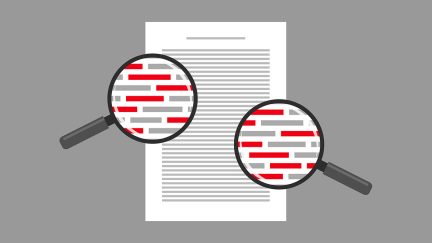Never miss a story — sign up for PLANSPONSOR newsletters to keep up on the latest retirement plan benefits news.
Will Changes to Hardship Withdrawal Rules Lead to More Plan Leakage?
While some experts think new rules Congress legislated that the Internal Revenue Service (IRS) proposed regarding hardship withdrawals from 401(k) or 403(b) plans will not lead to additional retirement plan leakage, others say they could potentially have that effect.
IRS rules regarding hardship withdrawals cover two areas, says Amy Ouellette, director of retirement services at Betterment for Business in New York. The first is reasons a retirement plan participant may apply for a hardship withdrawal, and the second is the onus to describe why this is an immediate and serious financial need. Disaster-related casualty losses has been added to the list of reasons a participant may apply for a hardship withdrawal, Ouellette says, which now include:
● Medical expenses that are not reimbursed;
● Purchasing a primary residence;
● Avoiding eviction or foreclosure;
● Repairing damages to one’s primary residence;
● School tuition fees and room and board for a family member or beneficiary;
● Funeral expenses; and
● Disaster-related casualty losses
The proposed IRS rules add “primary beneficiary under the plan” as an individual for whom qualifying medical, educational, and funeral expenses may be incurred.
Previously, participants could only withdraw contributions to their 401(k)—not earnings or matches, she says. Now, however, participants may withdraw from those additional sources if the plan sponsor chooses, she says. There are certain differences in the rules about what sources of money may be withdrawn from 403(b) plans.
Furthermore, there isn’t a limit on how much a person can withdraw, according to Ouellette. For instance, if he is facing foreclosure or eviction, he could withdraw $200,000 or more. However, she adds, “The participant would have to back that up.”
Previously, participants had to exhaust plan loans available to them before taking out a hardship withdrawal. But, the IRS proposed rule would change that to permit sponsors to sidestep the loans to allow participants to go straight to the hardship withdrawal. Several experts say that because participants are required to repay the loans back to their accounts, loans are much more preferable than hardship withdrawals, which cannot be repaid.
“Unlike a loan, you don’t pay the hardship withdrawal back,” says Tom Foster, national spokesperson for MassMutual’s workplace solutions unit in Enfield, Connecticut. “That money is just gone and there is no way to make that up unless you increase your deferrals to your [defined contribution plan], but most employees taking out a hardship withdrawal are unable to do that.” Additionally, Foster notes, the funds are subject to taxes, and if the participant is younger than 59-1/2, he has to pay a 10% penalty.
Whether an individual is taking out a loan or a hardship withdrawal, those leakages typically set their retirement nest egg back by 14%, he notes.
Dominic DeMatties, a partner with Alston & Bird in Washington, D.C., says he believes Congress wants to make it possible for plan sponsors to permit participants to sidestep the loans before taking out a hardship withdrawal due to the immediate needs that these participants face. “Congress has recognized that for people under financial duress, it may not be practical for them to wait for the whole process of taking out a loan and then seek a hardship withdrawal,” DeMatties says. “So, instead of requiring someone go through two hurdles to get to an end game, they are making it possible for a person to just go through one hurdle, which takes less time.”
Snezana Zlatar, senior vice president and head of full service product and business management at Prudential Retirement in Woodbridge, New Jersey, agrees: “Congress has focused on individuals undergoing true hardship. In that context, we believe that the elimination of the loan requirement actually does make sense because if an individual is in a tough financial situation, loan repayments could very well be a financial burden to them. Additionally, loans may not be enough to meet their financial hardship.”
Mike Zovistoski, managing director at UHY Advisors in Albany, New York, says most of his plan sponsor clients have the paternal instinct. “They want to protect employees from themselves,” he says, so he does not expect many of his clients to permit their employees to take out a hardship withdrawal without first going the loan route.
More plan leakage expected
However, Mike Windle, a retirement planning specialist at C. Curtis Financial in Plymouth, Michigan, says that with so many people wanting to access their plan funds before retirement, he is afraid that this new provision could lead to more leakage. “There aren’t a lot of people hip to [this new legislation] yet,” Windle says. “But once people start to realize this is available, they are going to start to use it. [Defined contribution plans] were created to incentivize saving for retirement. To use the funds ahead of time puts us back at square one.”
DeMatties agrees: “Without a doubt, the new rule makes it easier for people to access money in the event they have a hardship. Where the jury is still out is to what extent participants will utilize these procedures and access the money even when they do not qualify for one of the seven reasons the IRS has spelled out.”
Discouraging plan leakage
Zlatar says one way retirement plan sponsors can discourage participants from taking out either a loan or a hardship withdrawal is by helping them set up an after-tax emergency savings feature. Prudential and other providers have already built into such features into their recordkeeping platforms. “Our position is that a short-term emergency savings option within the 401(k) plan is the best alternative to a loan or hardship withdrawal, which is why we make this available,” Zlatar says.
Educating participants about the need to establish a budget and an emergency fund should also be part of that equation, Foster says. A participant might rethink taking out a loan or hardship withdrawal if the sponsor requires them to sign a document outlining the downsides, he says.
Sponsors should also offer alternatives to plan leakage, such as health savings accounts (HSAs), long-term or critical illness insurance and information about low-cost loans, Foster adds.
A positive note
One positive component of the new rules is that people with hardship withdrawals will no longer be precluded from contributing to their 401(k) or 403(b) for six months, notes Chad Parks, chief executive officer of Ubiquity Retirement + Savings in San Francisco. Because of inertia, that requirement has often led to participants never resuming deferrals to their plan, Parks says. “That could help substantially, because you are no longer asking people to stop contributing to their [plan]. With participants continuing to contribute, I would hope that these people will still come out ahead.”
One other aspect related to the new rules is that a sponsor no longer is required to keep evidence of the hardship expense and also may rely on the participant’s representation that he or she has no other financial means to alleviate the hardship, DeMatties says. “Instead, the sponsor can keep a summary of what is in the source documents that substantiate the hardship expense,” he says.
You Might Also Like:
IRS Issues 2025 Required Amendments List for Qualified Plans, 403(b)s
IRS, Treasury Offer Updates on How Trump Accounts Will Work
Delayed Release of 2026 Contribution Limits Unlikely to Cause Many Problems
« Gen Xers Need a New Focus for Saving and Investing Amid Market Volatility



